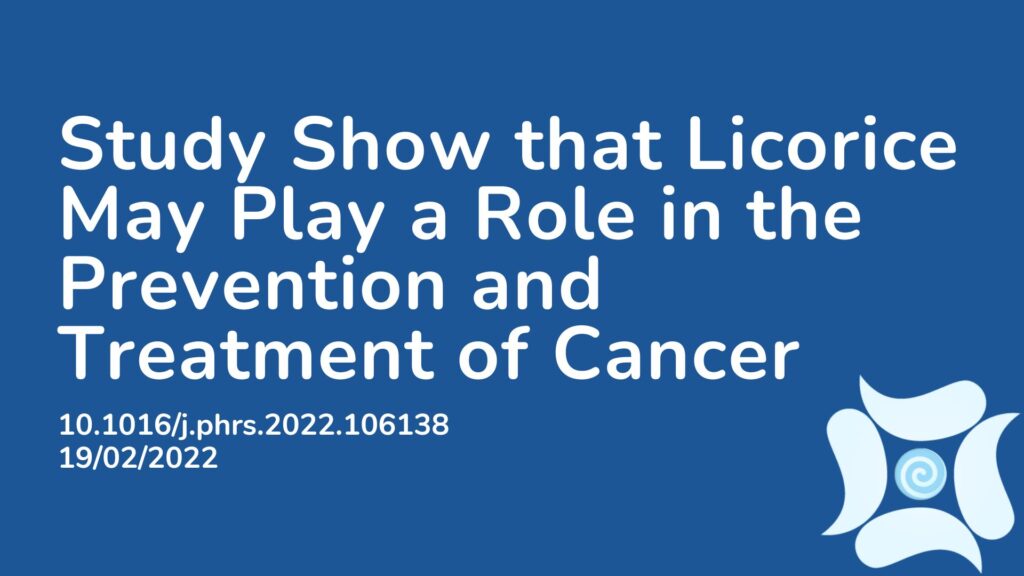Summary: Licorice, also known as Glycyrrhiza genus, is a plant cultivated worldwide that has been historically used to treat many ailments. Glycyrrhiza genus consists of roughly 30 species belonging to the family of Leguminosae and holds hundreds of bioactive ingredients. This present study looks at licorice substances such as glycyrrhizin on a molecular level and assesses its use in the prevention and treatment of cancer. The authors suggest that although much more research is needed in this area, their results show that licorice may play a role in cancer prevention and treatment. Given that cancer is the second leading cause of mortality worldwide (statistics from 2020), this is an important research area for public health. This paper also reveals that half of pharmaceutical drugs actually come from natural sources such as plant-derived active compounds. They also report that 75% of anticancer medications also come from plant-derived sources. Since our current method of cancer treatment is often reactive rather than proactive, a paper highlighting the role of a plant-based metabolite in the prevention of cancer signals the need for further investigation in order to measure whether it can be clinically applied.
Abstract:
Licorice (Glycyrrhiza glabra) is a well-known natural herb used to treat different ailments since ancient times. Glycyrrhizin (GL), which is the primary triterpenoid compound of licorice extract, has been known to have broad-spectrum pharmacological effects. GL is cleaved into glucuronide and the aglycone, glycyrrhetinic acid (GA), which exists in two stereoisomeric forms: 18α- and 18β-GA. It is well documented that GL and GA have great potential as anti-inflammatory, anticancer, antiviral, anti-diabetic, antioxidant, and hepatoprotective agents. Studies undertaken during the coronavirus disease 2019 pandemic suggest that GL is effective at inhibiting the viral replication of severe acute respiratory syndrome coronavirus 2. The anticancer effects of GL and GA involve modulating various signaling pathways, such as the phosphatase and tensin homolog/phosphatidylinositol 3-kinase/protein kinase B pathway, the mitogen-activated protein kinase, and the mammalian target of rapamycin/signal transducer and activator of transcription 3, which are mainly involved in regulating cancer cell death, oxidative stress, and inflammation. The potential of GL and GA in preventing cancer development and suppressing the growth and invasion of different cancer types has been reviewed in this paper. This review also provides molecular insights on the mechanism of action for the oncopreventive and oncotherapeutic effects of GL and its derivative, GA, which could help develop more specific forms of these agents for clinical use.
Article Publication Date: 19/02/2022
DOI: 10.1016/j.phrs.2022.106138



